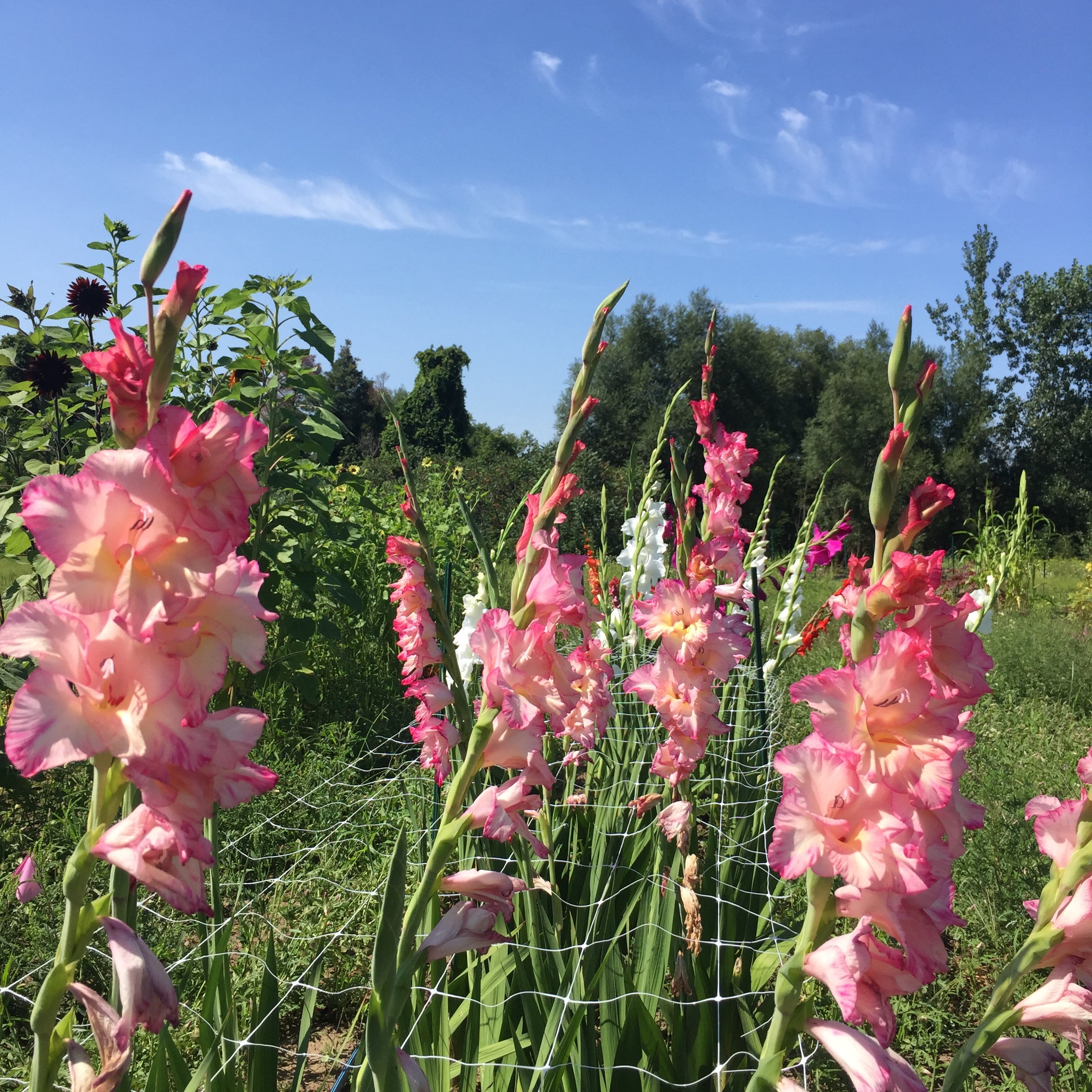Using Hortonova Netting on Cut Flowers
November 12, 2021
Staking and supporting cut flowers is a farm infrastructure decision that could go many ways. Stake and support methods will depend on your field’s exposure to wind, how often and how intense your area experiences wind storms, and your personal preference for the methods themselves (after all, you are the one who will be putting it up and taking it down every season).
Hortonova netting is commonly used on cut flower farms. It is a white plastic mesh with 6” squares that is horizontally suspended above plantings to prevent plants from toppling over in strong winds. I used it extensively in my first year of flower farming, netting practically every type of annual in the field. My field is fully exposed with no wind breaks, and strong winds have completely uprooted some of my crops, so I was a bit paranoid and under the impression I needed to reinforce everything with Hortonova. This proved to be not only time consuming to set up (and even more time consuming to take down, once all the plants grew through the mesh), but it also slowed me down when harvesting.
Related: How to Choose Flowers to Grow
Now, I only use Hortonova netting on the very few crops that absolutely need it and I’ve found it’s a wonderful, useful support method when used in the proper applications.
Please reference the following lists of crops I use Hortonova netting on, and which I do not.
The 4 Crops I always use Hortonova netting on:
Cosmos
Gladiolas
Lisianthus
Helianthus ‘Bleeding Hearts’
(I may possibly use it on new delphinium plants in 2022)
INSTALL METHOD: I use 4-ft u-posts down the edges of the beds, spaced 8 feet apart. I use zip ties to secure the netting to the u-posts and pull it tight. I suspend only one layer of hortonova netting about 12-16” from the soil line.
METHOD OF REMOVAL: When I am ready to remove the netting, I use hedge trimmers to snip the plant material that has grown above the netting. I cut it as close to the netting as I can. Then, the zip ties can be cut off the u-posts. I use a u-post to roll the netting back up to be reused again.
Could use Hortonova netting but I’ve found not to be necessary:
Zinnias (giant/tall varieties only)
Dahlias (I prefer to tie mine up with u-posts and baling twine)
Amaranth
Snapdragons (I only grow Madame Butterflies, which tend to be shorter after pinching. Taller, field-grown snapdragon varieties would definitely require Hortonova).
Ammi, including Dara, Green Mist and Bishop’s Lace
China Asters
Cockscomb celosias
Dill
Scabiosa
Sunflowers
I Never use Hortonova netting on the following:
Basil
Gomphrena
Marigolds
Statice, Silene, Strawflowers
Apple of Peru, Mahogany Hibiscus, Euphorbia, Sage
Phlox, Veronicas, Yarrow, Sedum, Salvia, Rudbeckias and other medium-height perennial flowering plants
Plume celosias



